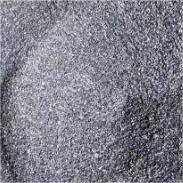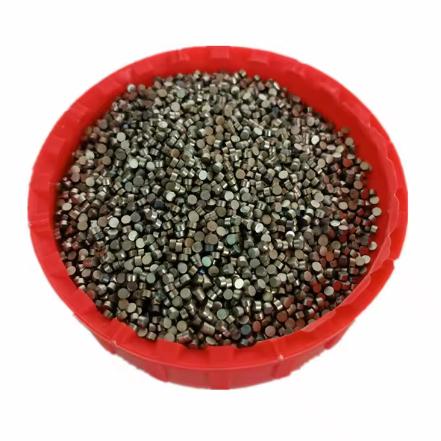The Secret Metal Hiding Beneath Your Silver-Plated Flatware
(What Metal Is Under Silver-Plated Flatware)
Ever admired your grandmother’s elegant silver-plated flatware? That beautiful shine catches the light. But what’s really underneath that thin layer of silver? It’s not solid sterling. The hidden metal matters. It affects durability, feel, and even value. Let’s uncover the truth beneath the shine.
**1. What Metal Forms the Base of Silver-Plated Flatware?**
The metal under the silver plating is rarely pure. It’s almost always an alloy. The most common base metal is called nickel silver. Nickel silver contains no real silver. It’s a mix of copper, nickel, and sometimes zinc. Think of it as a sturdy, affordable foundation.
Copper is the main ingredient. It provides structure and strength. Nickel adds hardness and a bright white color. Zinc can help with the metal’s flow during manufacturing. This combination creates a strong, stable base. It accepts the silver plating well. The base metal must be smooth. It must bond securely with the silver layer.
Sometimes, other copper alloys are used. Brass is one possibility. Brass mixes copper and zinc. It’s yellower than nickel silver. Stainless steel bases are less common. They require special plating techniques. Nickel silver remains the industry standard. It offers the best balance of cost, workability, and performance.
**2. Why Plate Base Metal with Silver?**
Using solid sterling silver for every fork and spoon is expensive. Very expensive. Silver plating solves this problem brilliantly. It gives the look and feel of luxury silver. But it does so at a fraction of the cost. The base metal provides the bulk and strength cheaply. The thin silver layer provides the beauty.
This process makes fine dining accessible. Families can own beautiful tableware without breaking the bank. Restaurants can offer elegant service affordably. Plating also allows for intricate designs. Base metal is easier to shape and stamp than solid silver. Manufacturers create detailed patterns on the base. Then they apply the silver plating. The result is ornate, attractive flatware.
The silver layer offers more than just looks. Silver has natural antibacterial properties. This is a small benefit for tableware. The base metal shields the silver somewhat. It protects the softer silver from heavy dents. The plating protects the base metal from tarnishing too quickly. It’s a practical partnership.
**3. How is Silver Applied to the Base Metal?**
The magic happens through electroplating. This is a precise electrochemical process. First, the base metal pieces are cleaned thoroughly. Any dirt or grease prevents good bonding. Cleaning is critical. The pieces are then immersed in a special chemical bath. This bath contains dissolved silver ions.
An electric current passes through the bath. The flatware pieces act as the cathode. Solid silver acts as the anode. The current causes the silver ions to move. They deposit onto the surface of the base metal. Layer by layer, the silver builds up. The thickness is carefully controlled. It’s measured in microns – millionths of a meter.
Quality plating requires skill. The bath composition must be perfect. The temperature and current must be exact. The time in the bath determines the thickness. Higher quality pieces have thicker plating. This means they last longer before wearing through. After plating, pieces are often polished. This brings out the brilliant shine. Sometimes a protective lacquer is applied. This helps slow tarnishing.
**4. Applications: Where Silver-Plated Flatware Shines**
Silver-plated flatware excels in many settings. It’s the heart of elegant home dining. Families use it for holidays, celebrations, and special dinners. It transforms an ordinary meal into something memorable. It feels substantial and luxurious in the hand.
Restaurants, especially high-end ones, rely heavily on it. It provides the upscale look customers expect. It’s durable enough for constant use. Banquet halls and catering companies use it for large events. Hotels use it for room service and dining rooms. It offers sophistication without the risk of losing solid silver pieces.
It’s also popular for gifts. Wedding gifts, anniversary presents, or christening sets. A quality set is cherished. It becomes a family heirloom. Antique and vintage silver-plated pieces are collected. People appreciate the craftsmanship and history. Well-maintained sets retain their beauty for generations.
**5. FAQs About Silver-Plated Flatware**
**Does the base metal affect the value?** Yes, significantly. The base metal itself has little monetary value. Nickel silver is inexpensive. The value comes from the silver plating and the craftsmanship. Antique sets from famous makers are worth more. Condition is crucial. Worn plating showing the base metal lowers value.
**How can I tell if my flatware is solid silver or plated?** Look for marks. Solid sterling is usually marked “925” or “Sterling”. Silver-plated items might say “Silver Plated”, “EPNS” (ElectroPlated Nickel Silver), or “EP” followed by a maker’s mark. If you see copper or brass showing through worn spots, it’s plated.
**Why does it tarnish?** Silver reacts with sulfur compounds in the air. This forms silver sulfide, the black tarnish. It’s a natural process. Humidity and pollutants speed it up. Plated pieces tarnish just like solid silver. They need regular polishing.
**How do I care for it properly?** Hand wash it gently with mild soap. Dry it immediately. Avoid harsh detergents and the dishwasher. Dishwasher detergent and heat damage the plating quickly. Polish regularly with a good silver polish. Use soft cloths. Store it in anti-tarnish cloth or bags. Keep it dry.
(What Metal Is Under Silver-Plated Flatware)
**Can worn plating be fixed?** Replating is possible. Professional silversmiths offer this service. They strip off the old, worn silver. They polish the base metal. Then they apply a new layer of silver plating. It can restore the piece beautifully. But it costs money. It might not be worth it for very common pieces.
Inquiry us
if you want to want to know more, please feel free to contact us.


